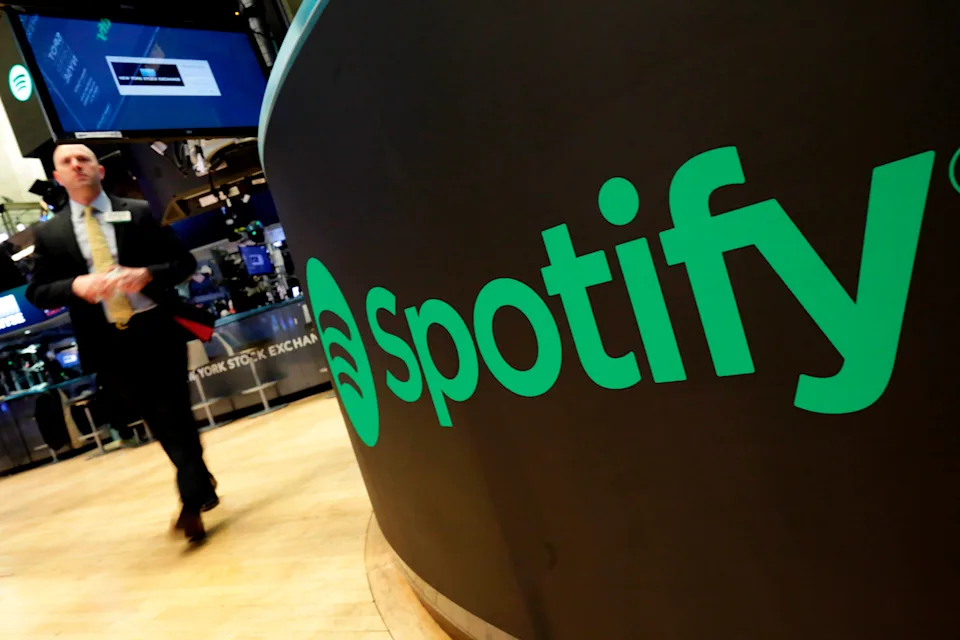Spotify shares fell as much as 8% in early premarket trading Tuesday after the company reported disappointing user and financial guidance. The stock later pared some losses, down about 6% roughly an hour before the market opened.
The music streaming giant guided to second quarter monthly active users (MAUs) of 689 million, falling short of the roughly 694 million analysts polled by Bloomberg had expected. Second quarter guidance for operating income and gross margins also missed expectations.
For the first quarter, MAUs rose 10% year over year to 678 million, a slight miss compared to the 679 million estimate. Premium subscribers increased 12% from the prior year to 268 million, marking the second-highest first quarter subscriber net addition in the company’s history.
In the earnings release, Spotify CEO Daniel Ek said: “The underlying data at the moment is very healthy: engagement remains high, retention is strong, and thanks to our freemium model, people have the flexibility to stay with us even when things feel more uncertain.”
Heading into the earnings report, Wall Street analysts viewed Spotify as a defensive play against macroeconomic uncertainty weighing on Big Tech companies, similar to Netflix. “It is our view that SPOT’s subscription model should be more defensive/utility-like amid the current macro uncertainty,” Bank of America analyst Jessica Reif Ehrlich wrote ahead of the results.
Spotify stock had surged to all-time highs of around $652 in mid-February. While shares are off those records, they have still climbed roughly 106% over the past year as of Monday’s close, marking a dramatic rebound from the record lows the company experienced in 2022.
Earlier this year, Spotify reported its first full year of profitability and set quarterly records for revenue, gross margin, operating income, and free cash flow. The company’s surge followed a sweeping business overhaul, including mass layoffs, executive reshuffles, and a pivot away from exclusive podcast deals, a market Spotify had aggressively entered between 2019 and 2021.
Spotify has since drastically scaled back its podcast investments but remains committed to the medium. On Monday, the company said it paid more than $100 million to podcast publishers and podcasters worldwide in the first quarter, stating it reflected “our deep commitment to the creator economy.” The figure included payments to creators across all formats and agreements, including high-profile names like Joe Rogan and Alex Cooper.
At its 2022 Investor Day, Spotify set ambitious long-term gross margin targets between 30% and 35%, at a time when it was struggling to turn a profit with margins stuck around 25%. That trajectory began to shift in 2024 after Spotify raised prices for the second time in less than a year and introduced new subscription offerings, such as a higher-priced audio bundle covering music, podcasts, and audiobooks. It also rolled out an audiobooks-only plan and a music-only streaming tier to diversify its consumer options.
Spotify reported first quarter margins of 31.6%, a slight dip from the record 32.2% reported in the previous quarter but still slightly ahead of Wall Street expectations. However, second quarter gross margins were guided to 31.5%, just below consensus forecasts of 31.6%.
Analysts have cautioned that the rapid pace of margin expansion seen last year could slow, particularly as Spotify’s newly renewed licensing deals with major music labels are expected to slightly pressure future results.
Looking ahead, advertising revenue will be an important focus amid ongoing macroeconomic uncertainty. Advertising currently accounts for about 12% of Spotify’s total revenue.






